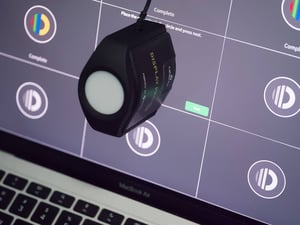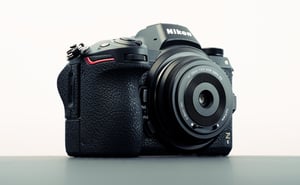Often, wildlife and nature photography happens a long way from the nearest parking lot. Which inevitably raises the question: What’s the best way to haul all that bulky, heavy gear around without breaking yourself in the process? Is there a camera backpack out there that can carry everything you need?
Reviews Archive
Nikon Z 28-135mm f/4 PZ Review
The Nikon Z 28-135mm f/4 PZ is a full-frame mirrorless lens targeted toward videographers and hybrid shooters. Although it isn't Nikon's first PZ (Power Zoom) lens, it's their first that is meant for a professional audience. The high-end nature of the lens is evident not just in the build quality,...
Fotopro E7 Camo Review: A Tripod for Bird Photography
Most tripods can be considered relatively universal tools that can be used for just about anything within their weight category. Even the tripod I'm reviewing today - the Fotopro E7 Camo - could, in theory, be used for something like studio photography. However, its camouflage coating and other design features...
Hohem iSteady MT2 Video Gimbal Review
The Hohem iSteady MT2 is a 653g, 3-axis video gimbal. It can hold a lighter camera or a phone up to 1.2kg, and it can provide more stabilization for video compared to the IBIS systems on cameras. How does it perform, and is it the right gimbal for you? Read...
Nikon Z 35mm f/1.2 S Review
Not too wide, not too narrow – just right. I’m talking about the 35mm lens, a classic for documentary and street photography (and more). Today, I am here to review not just any 35mm lens, but the most extreme 35mm that Nikon has ever made: the Nikon Z 35mm f/1.2 S.
Calibrite Display Pro HL and Profiler Review
One of the most fun steps in photography is post-processing. But if your computer monitor isn't displaying accurate colors, then all of your edits may be wrong - and one of the least fun steps in photography is re-doing a bunch of work you already did! That's why proper color...
Viltrox AF 28mm F4.5 Chip Review
Viltrox has just announced the Viltrox AF 28mm f/4.5 Chip lens, a fixed-aperture autofocus lens for the Nikon Z mount, which has been available for the Sony E mount for some time. This pancake lens is pretty small, inexpensive, and has some interesting features all for $99. In this review,...
Viltrox AF 50mm f/2 Air Review
Sometimes I feel haunted by 50mm lenses! My first prime lens was a Pentax 50mm f/1.7, and later my first Nikon lens was the 50mm f/1.8G. Although I think 50mm is a little on the wide side for my style, my first Nikon Z lens was also a 50mm. So,...
Voigtlander APO-Lanthar 50mm f/2 II Review
The Voigtlander APO-Lanthar 50mm f/2 II is a full-frame, manual focus lens designed with an emphasis on build quality and image quality. Today, I wanted to offer my full review of this interesting little lens and show you how it performs both in the field and in the lab.
K&F Concept Nano-X UV Filter Review
UV filters are perhaps the most popular type of lens filter, with many photographers using them to protect the front element of an expensive lens. Unfortunately, there's a huge range in the quality of UV filters out there. I wanted to put together a methodology to test UV filters, and...









